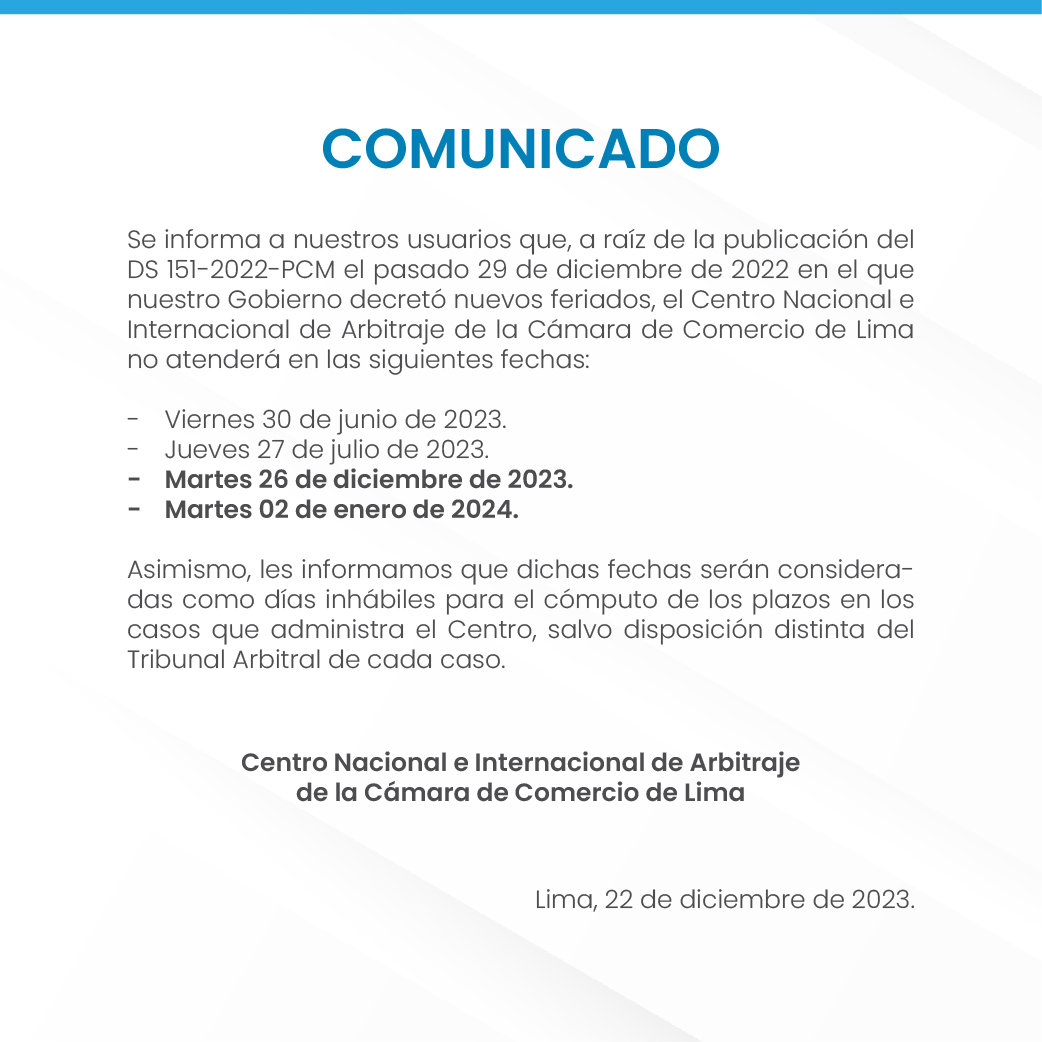What is a Dispute Board and how is it developed?


CCL Arbitration Center
The growing progress of the construction industry is accompanied by increasingly complex commercial and legal relationships that require efficient dispute resolution methods that understand the needs and dynamics of each project.
In this context, the Dispute Boards (“DB”) originated as an alternative dispute resolution mechanism, a management tool made up of one or more experts with technical and legal knowledge in construction matters, called “adjudicators”, who are informed about the progress in the execution of the works and the compliance with other technical aspects. This allows them to warn of risks, prevent and efficiently solve any possible dispute that is within their competence. Thus, the objective of the DBs is to ensure that the work is not paralyzed or affected in its execution and that it continues to progress until the project is completed.
Peru has recognized the DB under the name Dispute Resolution Board (“DRB”) as a method of dispute resolution of the contractual performance of works contracts regulated under the State Contracting Law (Law No. 30225). The JRD must be formed once the contract has been signed and accompany the project until the work is received. Its objectives are, on the one hand, to reduce conflicts in the execution of the construction contract and, on the other hand, in the event of a dispute, to resolve it by issuing binding decisions for the parties.
How does DB work?
The DB has three (3) essential functions:
- Preventive function: The DB can warn of situations that could pose potential risks to the project and help the parties reach an amicable solution.
- Advisory function: The parties may ask the DB for non-binding opinions or recommendations on any aspect of the work.
- Decision-making function: In the event of a dispute, the DB may issue a binding decision after a short and expeditious procedure in which each party supports its position.
When can a DB/JRD be used?
DB can be agreed upon by the parties in construction contracts, regardless of the amount or specific subject matter according to the needs of the project.
In public works contracts, according to the State Contracting Law, the DRB can be agreed in the original contract or at a later time. The obligation of these DRBs depends on the amount of the contract:
- In construction contracts with a value of more than S/. 20 million, the JRD is mandatory.
- In construction contracts with a value of less than S/. 20 million, the DRB is optional.
The amount also determines the number of members of the DRB, unless previously agreed upon by the parties:
- In works contracts with a value of less than S/. 40 million, the DRB is composed of one (1) member.
- In works contracts with a value greater than S/. 40 million, the DRB is composed of three (3) members.
Who can be a member of a DB /JRD?
At the DB it is the parties who determine, through their contract, the profile of the professionals who will make up the DB.
At the DRB, According to the Regulations of the State Contracting Law, the members of the DRB must be experts in the execution of works.
- In the case of a DRB composed of only one (1) member, it must necessarily be an engineer or architect with knowledge of the regulations applicable to the contract.
- In the case of a DRB composed of three (3) members, the chairman of the DRB shall be an engineer or architect with knowledge of the regulations applicable to the contract, and the other members may be experts in the execution of works in general.
Advantages of a DB/JRD
The inclusion of a DB or JRD, as the case may be, in a works contract entails important advantages for the parties and the project, such as:
Expertise: DB or JRD members are highly skilled professionals in the technical issues required for the completion of the work.
- Immediacy: The DRB or DB has in-depth knowledge of the project’s characteristics and can prevent and warn in real time of potential risks.
- Continuity of execution: Allows the work not to be paralyzed and to continue even in the event of formal disputes.
- Cost savings: the prevention of disputes leads to significant savings for the parties.
If you want your contract to include a DB or JRD clause, click here:
https://www.arbitrajeccl.com.pe/clausula-jrd
Noticias Relacionadas


